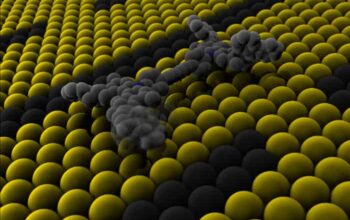The realm of quantum mechanics frequently unveils phenomena that challenge our traditional comprehension of physics. As researchers delve deeper into the exotic states of matter, one topic captures the imagination of scientists and enthusiasts alike: Bose-Einstein Condensates (BECs). These states exist at temperatures approaching absolute zero, creating a macroscopic entity formed by a collection of bosonic particles occupying the same quantum state. The recent integration of heavier elements, such as caesium, into the BEC paradigm represents both a scientific milestone and a myriad of complex implications for theoretical physics and condensed matter research.
Caesium, with its atomic number of 55, stands out among alkali metals due to its relatively large mass. For a long time, BEC research predominantly involved lighter atoms like rubidium or sodium. However, the introduction of caesium opens a fascinating new chapter in this field. Could this heavier particle usher in new phenomena, or does it merely adhere to the established principles laid down by its lighter counterparts? This question prompts an exploration into how the unique interactions and characteristics of caesium might influence the emergent collective behaviors seen in BECs.
One pivotal aspect to consider is the effective mass of caesium atoms in a condensate. The heavier mass of caesium fundamentally alters its interaction dynamics. Quantum mechanics suggests that the weight of particles influences their statistical behavior at ultracold temperatures. Heavy particles like caesium will exhibit more pronounced quantum degeneracy effects, potentially leading to novel phase transitions that diverge from the behavior exhibited by lighter bosons. This divergence invites speculation on the existence of unexplored quantum phenomena, perhaps akin to superfluidity or supersolidity but with uniquely caesium-centric characteristics.
Additionally, interactions between atoms within a BEC contribute significantly to the emergent properties of the condensate. The robust nature of caesium can lead to intricate variations in interaction potentials. Enhanced nonlinearity due to greater atomic mass may yield richer physical phenomena, such as the emergence of solitons or other non-trivial waveforms in the condensate. The specter of modifying the interaction strength also emerges; as these systems are precisely tuned, what uncharted territories in non-equilibrium dynamics might await discovery?
The inductance of caesium into Bose-Einstein condensation challenges conventional wisdom regarding the scalability of BEC phenomena. It intertwines scientific inquiry with practical implications. As heavier elements achieve condensation, does this predicate a path toward the development of novel materials or technological advancements? The properties of caesium, including its polarizability, can enhance the performance of quantum devices or even refine sensors and imaging technologies. This raises pertinent questions regarding the application of heavy atom BECs: will they revolutionize quantum computing, or are there inherent thermodynamic limits that confine their utility?
Nevertheless, the challenges posed by employing heavier bosons may not be insignificant. Theoretically, as mass increases, the logistical hurdles of achieving and stabilizing such condensates become exponentially complex. The required cooling techniques must be finely tuned, and the experimental apparatus inherently becomes more sophisticated. Moreover, the phenomenon of heating needs addressing; preservation of the BEC state could become tenuous when working with heavy atoms that may exacerbate quantum decoherence effects. Will the increased mass lead to increased instability, or can innovative cooling methods be developed to counteract these challenges?
Exploring the interplay between caesium’s characteristics and the BEC framework also serves to highlight the possible emergence of hybrid BECs. Theoretical constructs suggest that BECs composed of both light and heavy atoms could potentially manifest states that transcend traditional classifications, creating a fertile ground for novel quantum phenomena. This notion invokes the curious idea: what if the properties of different bosons could be combined to tune physical properties in real time? The manipulation of such mixed-state condensates might yield a plethora of applications in quantum simulation and computation, fundamentally altering how we model complex quantum systems.
Returning to the conceptual inquiry, while the implications of caesium joining the Cold Club elucidate fascinating possibilities for future research, it simultaneously encapsulates the queries and uncertainties integral to the scientific process. The physics community stands at a formidable juncture, confronting both the promise of new discoveries and the obstacles posed by the idiosyncratic behavior of heavier elements. Thus, as the investigation of caesium in BECs burgeons, it is an open dialogue where the complexities of experimental physics and theoretical projections intersect, compelling researchers to navigate realms as yet untraversed.
In conclusion, the introduction of caesium into Bose-Einstein condensates amplifies the existing discourse surrounding quantum mechanics and condensed matter physics. As heavy elements begin to merge with existing paradigms, an intricate web of opportunities and challenges emerges. The bridge between theoretical intricacies and experimental achievements beckons researchers to continue exploration through the lens of caesium’s unique properties. In doing so, they may unravel groundbreaking knowledge that reshapes our understanding of the fundamental laws governing the cosmos.










